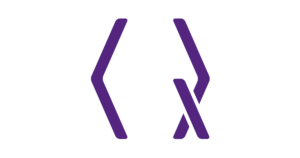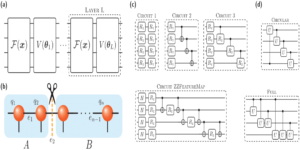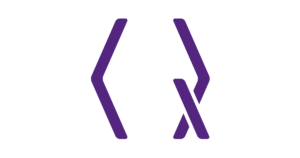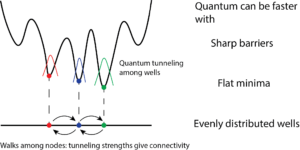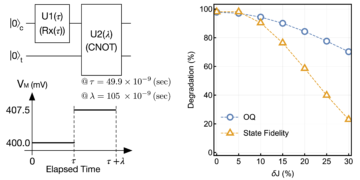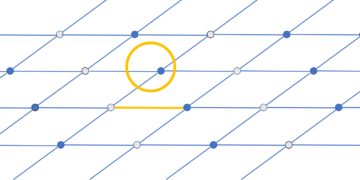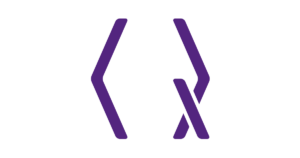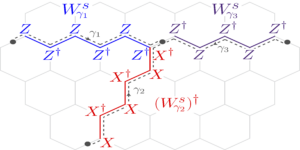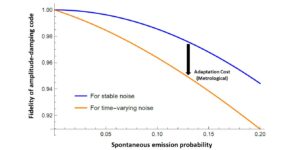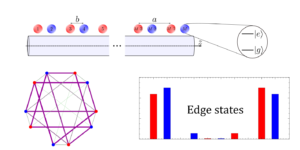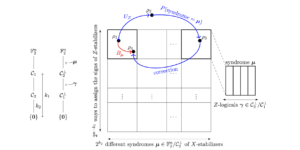1Department of Physics, University of Illinois at Urbana-Champaign, Urbana, Illinois 61801,USA
2JILA, University of Colorado/NIST, Boulder, CO, 80309, USA
3Department of Physics, University of Colorado, Boulder CO 80309, USA
4Department of Electrical and Computer Engineering, Coordinated Science Laboratory, University of Illinois at Urbana-Champaign, Urbana, Illinois 61801, USA
5Illinois Quantum Information Science and Technology (IQUIST) Center, University of Illinois Urbana-Champaign, Urbana, IL 61801
Find this paper interesting or want to discuss? Scite or leave a comment on SciRate.
Abstract
A powerful operational paradigm for distributed quantum information processing involves manipulating pre-shared entanglement by local operations and classical communication (LOCC). The LOCC round complexity of a given task describes how many rounds of classical communication are needed to complete the task. Despite some results separating one-round versus two-round protocols, very little is known about higher round complexities. In this paper, we revisit the task of one-shot random-party entanglement distillation as a way to highlight some interesting features of LOCC round complexity. We first show that for random-party distillation in three qubits, the number of communication rounds needed in an optimal protocol depends on the entanglement measure used; for the same fixed state some entanglement measures need only two rounds to maximize whereas others need an unbounded number of rounds. In doing so, we construct a family of LOCC instruments that require an unbounded number of rounds to implement. We then prove explicit tight lower bounds on the LOCC round number as a function of distillation success probability. Our calculations show that the original W-state random distillation protocol by Fortescue and Lo is essentially optimal in terms of round complexity.
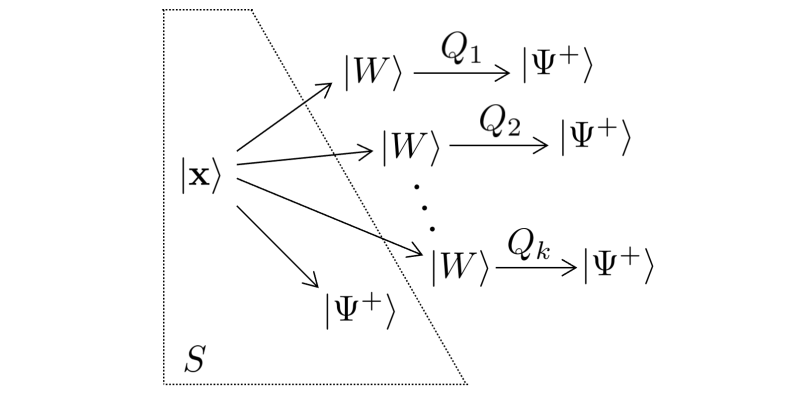
Featured image: Depiction of entanglement distillation protocol
Popular summary
In this work, we design and prove the optimality of distillation protocols, focusing on pure-state distillation from tripartite W-class states to bipartite entangled states using local operations and classical communication (LOCC) operations. We consider two different ways of measuring the resulting bipartite entanglement: EPR distillation and concurrence distillation, each with its own optimal protocol. We accept the outcoming state regardless of which two parties share the bipartite entanglement, therefore the name “random-party”. We also identify a family of separable operations, parametrized by a real variable, which lies on the boundary of the set of LOCC protocols. Finally, we find numerically a clear gap in the distillation capability between LOCC and positive partial transpose (PPT ) operations.
► BibTeX data
► References
[1] Erika Andersson and Daniel K. L. Oi. Binary search trees for generalized measurements. Phys. Rev. A, 77:052104, May 2008. doi:10.1103/PhysRevA.77.052104.
https://doi.org/10.1103/PhysRevA.77.052104
[2] MOSEK ApS. The MOSEK optimization toolbox for MATLAB manual. Version 9.0., 2019. URL: http://docs.mosek.com/9.0/toolbox/index.html.
http://docs.mosek.com/9.0/toolbox/index.html
[3] Charles H. Bennett, David P. DiVincenzo, Christopher A. Fuchs, Tal Mor, Eric Rains, Peter W. Shor, John A. Smolin, and William K. Wootters. Quantum nonlocality without entanglement. Phys. Rev. A, 59:1070–1091, Feb 1999. doi:10.1103/PhysRevA.59.1070.
https://doi.org/10.1103/PhysRevA.59.1070
[4] Charles H. Bennett, David P. DiVincenzo, John A. Smolin, and William K. Wootters. Mixed-state entanglement and quantum error correction. Physical Review A, 54(5):3824–3851, November 1996. doi:10.1103/physreva.54.3824.
https://doi.org/10.1103/physreva.54.3824
[5] Andrew M. Childs, Debbie Leung, Laura Mančinska, and Maris Ozols. A framework for bounding nonlocality of state discrimination. Communications in Mathematical Physics, 323(3):1121–1153, September 2013. doi:10.1007/s00220-013-1784-0.
https://doi.org/10.1007/s00220-013-1784-0
[6] Andrew M. Childs, Debbie Leung, Laura Mančinska, and Maris Ozols. Interpolatability distinguishes LOCC from separable von neumann measurements. Journal of Mathematical Physics, 54(11):112204, November 2013. doi:10.1063/1.4830335.
https://doi.org/10.1063/1.4830335
[7] Eric Chitambar. Local quantum transformations requiring infinite rounds of classical communication. Physical Review Letters, 107(19), November 2011. doi:10.1103/physrevlett.107.190502.
https://doi.org/10.1103/physrevlett.107.190502
[8] Eric Chitambar, Wei Cui, and Hoi-Kwong Lo. Entanglement monotones forW-type states. Physical Review A, 85(6), June 2012. doi:10.1103/physreva.85.062316.
https://doi.org/10.1103/physreva.85.062316
[9] Eric Chitambar, Wei Cui, and Hoi-Kwong Lo. Increasing entanglement monotones by separable operations. Physical Review Letters, 108(24), June 2012. doi:10.1103/physrevlett.108.240504.
https://doi.org/10.1103/physrevlett.108.240504
[10] Eric Chitambar and Min-Hsiu Hsieh. Revisiting the optimal detection of quantum information. Phys. Rev. A, 88:020302, Aug 2013. doi:10.1103/PhysRevA.88.020302.
https://doi.org/10.1103/PhysRevA.88.020302
[11] Eric Chitambar and Min-Hsiu Hsieh. Asymptotic state discrimination and a strict hierarchy in distinguishability norms. Journal of Mathematical Physics, 55(11):112204, November 2014. doi:10.1063/1.4902027.
https://doi.org/10.1063/1.4902027
[12] Eric Chitambar and Min-Hsiu Hsieh. Round complexity in the local transformations of quantum and classical states. Nature Communications, 8(1), December 2017. doi:10.1038/s41467-017-01887-5.
https://doi.org/10.1038/s41467-017-01887-5
[13] Eric Chitambar, Debbie Leung, Laura Mančinska, Maris Ozols, and Andreas Winter. Everything you always wanted to know about LOCC (but were afraid to ask). Communications in Mathematical Physics, 328(1):303–326, March 2014. doi:10.1007/s00220-014-1953-9.
https://doi.org/10.1007/s00220-014-1953-9
[14] Eric Chitambar, Debbie Leung, Laura Mančinska, Maris Ozols, and Andreas Winter. Everything you always wanted to know about locc (but were afraid to ask). Communications in Mathematical Physics, 328(1):303–326, Mar 2014. doi:10.1007/s00220-014-1953-9.
https://doi.org/10.1007/s00220-014-1953-9
[15] Scott M. Cohen. Structure of local quantum operations and classical communication: Finite versus infinite rounds. Phys. Rev. A, 91:042106, Apr 2015. doi:10.1103/PhysRevA.91.042106.
https://doi.org/10.1103/PhysRevA.91.042106
[16] Scott M. Cohen. General approach to quantum channel impossibility by local operations and classical communication. Phys. Rev. Lett., 118:020501, Jan 2017. doi:10.1103/PhysRevLett.118.020501.
https://doi.org/10.1103/PhysRevLett.118.020501
[17] Sarah Croke and Stephen M. Barnett. Difficulty of distinguishing product states locally. Phys. Rev. A, 95:012337, Jan 2017. doi:10.1103/PhysRevA.95.012337.
https://doi.org/10.1103/PhysRevA.95.012337
[18] Wei Cui, Eric Chitambar, and Hoi-Kwong Lo. Randomly distillingW-class states into general configurations of two-party entanglement. Physical Review A, 84(5), November 2011. doi:10.1103/physreva.84.052301.
https://doi.org/10.1103/physreva.84.052301
[19] CVX Research, Inc. CVX: Matlab software for disciplined convex programming, version 2.0. http://cvxr.com/cvx, August 2012.
http://cvxr.com/cvx
[20] Igor Devetak and Andreas Winter. Distillation of secret key and entanglement from quantum states. Proceedings of the Royal Society A: Mathematical, Physical and Engineering Sciences, 461(2053):207–235, January 2005. doi:10.1098/rspa.2004.1372.
https://doi.org/10.1098/rspa.2004.1372
[21] W. Dür, G. Vidal, and J. I. Cirac. Three qubits can be entangled in two inequivalent ways. Phys. Rev. A, 62:062314, Nov 2000. doi:10.1103/PhysRevA.62.062314.
https://doi.org/10.1103/PhysRevA.62.062314
[22] Ben Fortescue and Hoi-Kwong Lo. Random bipartite entanglement fromWandW-like states. Physical Review Letters, 98(26), June 2007. doi:10.1103/physrevlett.98.260501.
https://doi.org/10.1103/physrevlett.98.260501
[23] Ben Fortescue and Hoi-Kwong Lo. Random-party entanglement distillation in multiparty states. Physical Review A, 78(1), July 2008. doi:10.1103/physreva.78.012348.
https://doi.org/10.1103/physreva.78.012348
[24] Alvin Gonzales and Eric Chitambar. Bounds on instantaneous nonlocal quantum computation. IEEE Transactions on Information Theory, 66(5):2951–2963, 2020. doi:10.1109/TIT.2019.2950190.
https://doi.org/10.1109/TIT.2019.2950190
[25] Ryszard Horodecki, Paweł Horodecki, Michał Horodecki, and Karol Horodecki. Quantum entanglement. Rev. Mod. Phys., 81:865–942, Jun 2009. doi:10.1103/RevModPhys.81.865.
https://doi.org/10.1103/RevModPhys.81.865
[26] Nathaniel Johnston. QETLAB: A MATLAB toolbox for quantum entanglement, version 0.9. http://qetlab.com, Jan 2016. doi:10.5281/zenodo.44637.
https://doi.org/10.5281/zenodo.44637
http://qetlab.com
[27] S. Kıntaş and S. Turgut. Transformations of w-type entangled states. Journal of Mathematical Physics, 51(9):092202, September 2010. doi:10.1063/1.3481573.
https://doi.org/10.1063/1.3481573
[28] M. Kleinmann, H. Kampermann, and D. Bruß. Asymptotically perfect discrimination in the local-operation-and-classical-communication paradigm. Phys. Rev. A, 84:042326, Oct 2011. doi:10.1103/PhysRevA.84.042326.
https://doi.org/10.1103/PhysRevA.84.042326
[29] T. Laustsen, F. Verstraete, and Steven J. van Enk. Local vs. joint measurements for the entanglement of assistance. Quantum Inf. Comput., 3:64–83, 2003.
[30] Debbie Leung, Andreas Winter, and Nengkun Yu. LOCC protocols with bounded width per round optimize convex functions. Reviews in Mathematical Physics, 33(05):2150013, January 2021. doi:10.1142/s0129055x21500136.
https://doi.org/10.1142/s0129055x21500136
[31] Zheng-Da Li, Xiao Yuan, Xu-Fei Yin, Li-Zheng Liu, Rui Zhang, Yue-Yang Fei, Li Li, Nai-Le Liu, Xiongfeng Ma, He Lu, Yu-Ao Chen, and Jian-Wei Pan. Experimental random-party entanglement distillation via weak measurement. Phys. Rev. Research, 2:023047, Apr 2020. doi:10.1103/PhysRevResearch.2.023047.
https://doi.org/10.1103/PhysRevResearch.2.023047
[32] Hoi-Kwong Lo and Sandu Popescu. Concentrating entanglement by local actions: Beyond mean values. Phys. Rev. A, 63:022301, Jan 2001. doi:10.1103/PhysRevA.63.022301.
https://doi.org/10.1103/PhysRevA.63.022301
[33] MATLAB. version R2021a. The MathWorks Inc., Natick, Massachusetts, 2021.
[34] Michael Nathanson. Three maximally entangled states can require two-way local operations and classical communication for local discrimination. Phys. Rev. A, 88:062316, Dec 2013. doi:10.1103/PhysRevA.88.062316.
https://doi.org/10.1103/PhysRevA.88.062316
[35] M. A. Nielsen. Conditions for a class of entanglement transformations. Phys. Rev. Lett., 83:436–439, Jul 1999. doi:10.1103/PhysRevLett.83.436.
https://doi.org/10.1103/PhysRevLett.83.436
[36] Ognyan Oreshkov and Todd A. Brun. Weak measurements are universal. Physical Review Letters, 95(11), Sep 2005. doi:10.1103/physrevlett.95.110409.
https://doi.org/10.1103/physrevlett.95.110409
[37] Ognyan Oreshkov and Todd A. Brun. Infinitesimal local operations and differential conditions for entanglement monotones. Phys. Rev. A, 73:042314, Apr 2006. doi:10.1103/PhysRevA.73.042314.
https://doi.org/10.1103/PhysRevA.73.042314
[38] Masaki Owari and Masahito Hayashi. Two-way classical communication remarkably improves local distinguishability. New Journal of Physics, 10(1):013006, January 2008. doi:10.1088/1367-2630/10/1/013006.
https://doi.org/10.1088/1367-2630/10/1/013006
[39] Asher Peres and William K. Wootters. Optimal detection of quantum information. Phys. Rev. Lett., 66:1119–1122, Mar 1991. doi:10.1103/PhysRevLett.66.1119.
https://doi.org/10.1103/PhysRevLett.66.1119
[40] Martin B. Plenio and Shashank Virmani. An introduction to entanglement measures. Quantum Info. Comput., 7(1):1–51, jan 2007. doi:10.48550/arXiv.quant-ph/0504163.
https://doi.org/10.48550/arXiv.quant-ph/0504163
arXiv:quant-ph/0504163
[41] E. M. Rains. Bound on distillable entanglement. Phys. Rev. A, 60:179–184, Jul 1999. doi:10.1103/PhysRevA.60.179.
https://doi.org/10.1103/PhysRevA.60.179
[42] Filip Rozpiȩdek, Thomas Schiet, Le Phuc Thinh, David Elkouss, Andrew C. Doherty, and Stephanie Wehner. Optimizing practical entanglement distillation. Phys. Rev. A, 97:062333, Jun 2018. doi:10.1103/PhysRevA.97.062333.
https://doi.org/10.1103/PhysRevA.97.062333
[43] Guojing Tian, Xia Wu, Ya Cao, Fei Gao, and Qiaoyan Wen. General existence of locally distinguishable maximally entangled states only with two-way classical communication. Scientific Reports, 6(1), July 2016. doi:10.1038/srep30181.
https://doi.org/10.1038/srep30181
[44] Guifré Vidal. Entanglement of pure states for a single copy. Phys. Rev. Lett., 83:1046–1049, Aug 1999. doi:10.1103/PhysRevLett.83.1046.
https://doi.org/10.1103/PhysRevLett.83.1046
[45] Eyuri Wakakuwa, Akihito Soeda, and Mio Murao. A coding theorem for bipartite unitaries in distributed quantum computation. IEEE Transactions on Information Theory, 63(8):5372–5403, August 2017. doi:10.1109/tit.2017.2709754.
https://doi.org/10.1109/tit.2017.2709754
[46] Eyuri Wakakuwa, Akihito Soeda, and Mio Murao. Complexity of causal order structure in distributed quantum information processing: More rounds of classical communication reduce entanglement cost. Phys. Rev. Lett., 122:190502, May 2019. doi:10.1103/PhysRevLett.122.190502.
https://doi.org/10.1103/PhysRevLett.122.190502
[47] William K. Wootters. Entanglement of formation of an arbitrary state of two qubits. Phys. Rev. Lett., 80:2245–2248, Mar 1998. doi:10.1103/PhysRevLett.80.2245.
https://doi.org/10.1103/PhysRevLett.80.2245
[48] Yu Xin and Runyao Duan. Local distinguishability of orthogonal $2otimes 3$ pure states. Phys. Rev. A, 77:012315, Jan 2008. doi:10.1103/PhysRevA.77.012315.
https://doi.org/10.1103/PhysRevA.77.012315
[49] Ying-Hui Yang, Jiang-Tao Yuan, Cai-Hong Wang, and Shi-Jiao Geng. Locally distinguishable maximally entangled states by two-way LOCC. Quantum Information Processing, 20(1), January 2021. doi:10.1007/s11128-020-02957-2.
https://doi.org/10.1007/s11128-020-02957-2
[50] Jiang-Tao Yuan, Ying-Hui Yang, and Cai-Hong Wang. Constructions of locally distinguishable sets of maximally entangled states which require two-way LOCC. Journal of Physics A: Mathematical and Theoretical, 53(50):505304, November 2020. doi:10.1088/1751-8121/abc43b.
https://doi.org/10.1088/1751-8121/abc43b
Cited by
Could not fetch Crossref cited-by data during last attempt 2023-09-07 15:02:20: Could not fetch cited-by data for 10.22331/q-2023-09-07-1104 from Crossref. This is normal if the DOI was registered recently. On SAO/NASA ADS no data on citing works was found (last attempt 2023-09-07 15:02:20).
This Paper is published in Quantum under the Creative Commons Attribution 4.0 International (CC BY 4.0) license. Copyright remains with the original copyright holders such as the authors or their institutions.
- SEO Powered Content & PR Distribution. Get Amplified Today.
- PlatoData.Network Vertical Generative Ai. Empower Yourself. Access Here.
- PlatoAiStream. Web3 Intelligence. Knowledge Amplified. Access Here.
- PlatoESG. Automotive / EVs, Carbon, CleanTech, Energy, Environment, Solar, Waste Management. Access Here.
- PlatoHealth. Biotech and Clinical Trials Intelligence. Access Here.
- ChartPrime. Elevate your Trading Game with ChartPrime. Access Here.
- BlockOffsets. Modernizing Environmental Offset Ownership. Access Here.
- Source: https://quantum-journal.org/papers/q-2023-09-07-1104/
- :is
- :not
- ][p
- 1
- 10
- 11
- 118
- 12
- 13
- 14
- 15%
- 16
- 17
- 179
- 19
- 1996
- 1998
- 1999
- 20
- 2000
- 2001
- 2005
- 2006
- 2008
- 2011
- 2012
- 2013
- 2014
- 2015
- 2016
- 2017
- 2018
- 2019
- 2020
- 2021
- 22
- 23
- 24
- 25
- 26%
- 27
- 28
- 29
- 30
- 31
- 32
- 33
- 36
- 39
- 40
- 400
- 49
- 50
- 54
- 60
- 66
- 7
- 77
- 8
- 80
- 84
- 9
- 91
- 98
- a
- About
- ABSTRACT
- Accept
- access
- actions
- affiliations
- afraid
- allows
- also
- always
- amount
- an
- and
- Andrew
- approach
- apr
- ARE
- AS
- asher
- ask
- Assistance
- At
- Aug
- AUGUST
- author
- authors
- BE
- becomes
- ben
- between
- Beyond
- Bound
- boundary
- bounds
- Break
- but
- by
- calculations
- CAN
- capability
- Center
- certain
- Channel
- Charles
- chen
- Christopher
- class
- clear
- CO
- Coding
- cohen
- collection
- Colorado
- COM
- comment
- Commons
- Communication
- Communications
- complete
- complexities
- complexity
- computation
- computer
- Computer Engineering
- conditions
- Consider
- construct
- Convex
- coordinated
- copyright
- Cost
- could
- Daniel
- data
- David
- Debbie
- December
- depends
- Design
- Despite
- Detection
- different
- Difficulty
- disciplined
- discuss
- distributed
- distribution
- doing
- during
- e
- each
- Engineering
- entanglement
- Erika
- error
- essentially
- everything
- existence
- experimental
- family
- Features
- Feb
- fei
- Finally
- Find
- First
- fixed
- focusing
- For
- formation
- found
- Framework
- from
- function
- functions
- GAO
- gap
- General
- George
- given
- goal
- harvard
- he
- hierarchy
- higher
- Highlight
- highly
- holders
- How
- HTML
- http
- HTTPS
- i
- identify
- IEEE
- if
- illinois
- image
- implement
- important
- improves
- in
- Inc.
- increasing
- Infinite
- info
- information
- institutions
- instruments
- interesting
- International
- into
- Introduction
- ITS
- Jan
- January
- January 2021
- JavaScript
- Jian-Wei Pan
- John
- joint
- journal
- July
- june
- Key
- Know
- known
- laboratory
- Last
- Leave
- Li
- License
- lies
- little
- local
- locally
- lower
- manipulating
- manual
- many
- March
- Martin
- massachusetts
- mathematical
- max-width
- Maximize
- May..
- mean
- measure
- measurement
- measurements
- measures
- measuring
- Michael
- minimizing
- Month
- more
- multiple
- name
- Nature
- Need
- needed
- New
- no
- normal
- norms
- November
- November 2013
- number
- Oct
- of
- on
- only
- open
- operational
- Operations
- optimal
- optimization
- Optimize
- optimizing
- or
- order
- original
- Others
- our
- own
- pages
- Paper
- paradigm
- parties
- per
- perfect
- Peter
- physical
- Physics
- plato
- Plato Data Intelligence
- PlatoData
- positive
- powerful
- Practical
- procedures
- Proceedings
- processing
- Product
- Programming
- protocol
- protocols
- Prove
- published
- publisher
- Quantum
- quantum entanglement
- quantum error correction
- quantum information
- qubits
- random
- real
- recently
- reduce
- references
- Regardless
- registered
- remains
- Reports
- require
- required
- research
- resulting
- Results
- review
- Reviews
- round
- rounds
- royal
- s
- same
- Science
- Science and Technology
- SCIENCES
- scientific
- scott
- Search
- Secret
- separating
- September
- set
- Sets
- Share
- Shor
- show
- single
- So
- Society
- Software
- some
- State
- States
- STEPHANIE
- Stephen
- steven
- Strict
- structure
- success
- such
- Take
- Task
- tasks
- Technology
- terms
- that
- The
- their
- Them
- then
- theoretical
- theory
- therefore
- These
- this
- three
- Title
- to
- Toolbox
- Total
- Transactions
- Transform
- transformations
- Trees
- two
- typically
- under
- Universal
- university
- URL
- us
- used
- using
- Values
- variable
- various
- version
- Versus
- very
- via
- volume
- von
- vs
- W
- want
- wanted
- was
- Way..
- ways
- we
- were
- whereas
- which
- width
- william
- Winter
- with
- without
- Work
- works
- wu
- xiao
- year
- You
- Yuan
- zephyrnet



